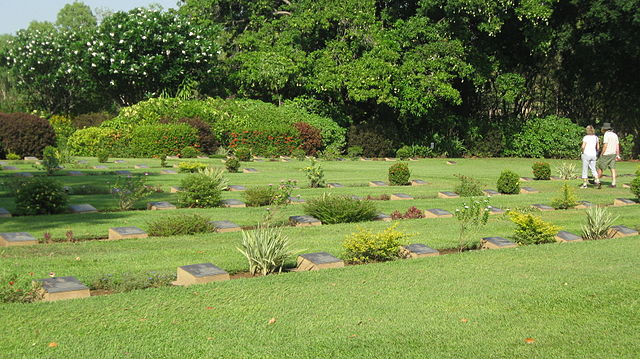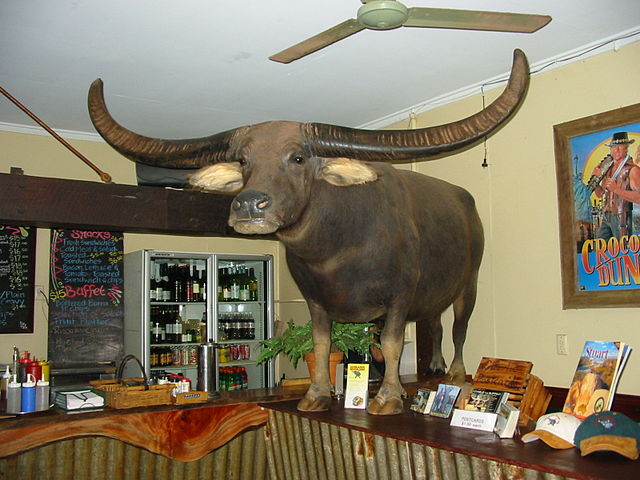Share this page:
The small town of Adelaide River, located 110 km south of Darwin, dates from the period when the Overland Telegraph and the North Australia Railway were being constructed in the 19th century.
This settlement was the supply hub for Darwin's defence during the Second World War. Supplies would be brought up from the south of Australia by rail and then transshipped to Darwin to the north. As a result, beginning in Febrary 1942, Adelaide River was bombed by Japanese forces on a number of occasions.

Adelaide River War Cemetery
Photo: Sarah Stewart
Reminders of the war period include:
-- Adelaide River War Cemetery
In this war cemetery (which is Australia's largest) many of the dead from Japanese raids on Darwin and Adelaide have been laid to rest. The immaculately maintained wall garden contains the final remains of 434 service personnel. There is also a memorial to 287 people who died in the Timor Sea off Darwin during the war. Nearby there are also the graves of 63 civilians who died in the war.
-- Snake Creek Arsenal
This was the site of a World War II armaments depot and a military camp.
-- Airstrips
There are many abandonned airstrips on both sides of the Stuart Highway (also known as "The Track") between Adelaide River and Darwin
Other places of interest in Adelaide River are:
-- Railway Station (dating from 1888-89 and now a National Trust property)
-- Railway Bridge (188-89)
-- the small pioneer cemetery with five graves dating from 1884
-- Scenic Route (including Robin Falls) which begins south of Adelaide River township

Charlie the Buffalo on the bar of the Adelaide River Inn
Photo: kenhodge13
A greatly loved water buffalo named Charlie, who had appeared in the famous 1986 Australian film Crocodile Dundee (starring actor Paul Hogan), lived in an enclosure at the Adelaide River Inn until his death in 2000, after which his body was stuffed and installed on the bar of that pub.
Events
In June every year Adelaide River hosts the Adelaide River Show replete with a rodeo, campdraft and gymkhana.
Share this page:
Author: David Paul Wagner
(David Paul Wagner on Google+)
|